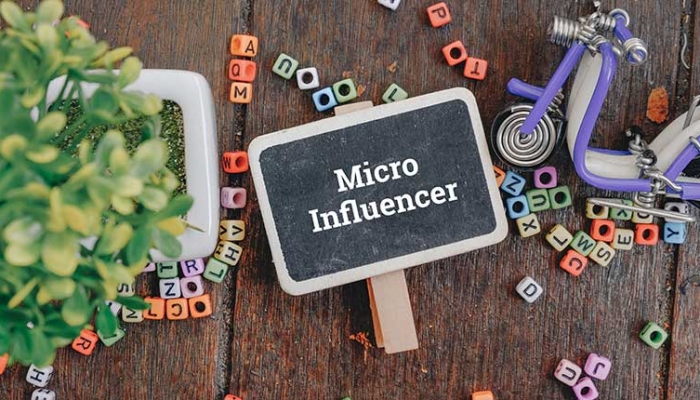The rise and rise of micro influencers
This is a guest post by Lis Anderson, director of AMBITIOUS.
Micro influencers are a growing market with an estimated value of 13.8 billion dollars in 2021, and a massive increase expected again in 2022. So why has this market exploded in the last couple of years?
Life has moved online. We know this. We also know that how we engage with people and content online has changed. Our expectations and requirements from brands are higher than ever before as customer confidence increases. They must reflect our values and demonstrate this in their presence – on and offline.
Successful marketing relies on reaching networks of people. Personality and authenticity are at the heart of successful marketing campaigns, and this is where influencers can really boost a brand.
What are micro influencers?
These are the influencers that pack a punch, but not in the way that you necessarily expect. They don’t have millions or even hundreds of thousands of followers, but they have influence over their communities. A micro influencer is defined as having between 10,000 and 50,000 followers. Over that, you’re looking at a mid-tier (50,000-500,000), macro (500,000-1 million) or mega (1 million+) influencer.
Micro influencers are more likely to be in niche communities, great for drilling down and connecting with audiences who have exact interests that match your offerings.
It’s worth noting that micro influencers have the highest engagement rate of all influencer types, which really opens up the market for businesses with limited budgets. Working with a micro influencer can be cost-effective and offer a great return on investment, depending on the industry and their community. Prices can start from just tens of pounds, meaning brands have a real chance to connect with their audiences.
How to start working with micro influencers
Choosing the right partner for a brand can make a massive impact, without a doubt. Micro influencers can take you to the next level as they are closely connected to their audiences.
1. Start by deciding your goals. What do you want to achieve through using a micro influencer? Consider increasing brand awareness or traffic to your website for example.
2. Find your micro influencer. Decide which platform you want to focus on and look for people here. Choose ones that have high engagement rates, post regularly and who have the right voice and personality to match your brand. It should feel like a natural collaboration.
3. Look at the hashtags they use, these should fit your brand and offerings.
4. Review their audience comments to see what they are interested in. Will a collaboration appeal to their community?
5. Ask for a performance report to truly understand what the influencer is achieving. Most will be happy to share their analytics with you.
6. Design a campaign together that will resonate with their audiences. Listen to the micro influencer as they know what content their audience likes.
7. Get the contract in place and agree pricing. It’s always worth doing a test case before doing a big campaign with them to see what sort of results they can get for you.
8. Check results. Are they what you expected? Use the results to inform new campaigns.
Micro influencers could include your employees. Some brands won’t have to go far to choose the right people for the job! Build long-term relationships with micro influencers to maximise impact and get your story told in the right way to the right communities.
Micro influencers and your brand
One thing to be aware of is that micro influencers will have lower reach than macro influencers. You will need to work with more micro influencers to reach the same numbers that a macro influencer has.
But using the right micro influencer will boost your brand’s reputation and get you increased online presence. Do you really need the followers numbers of a macro influencer?
For more on influencer marketing, check out our UK Influencer Survey 2020, our interview with Chris Stokel-Walker on the benefits of the influencer sector, as well as the top bloggers by sector in our regularly-updated Social Media Index section.







Leave a Comment